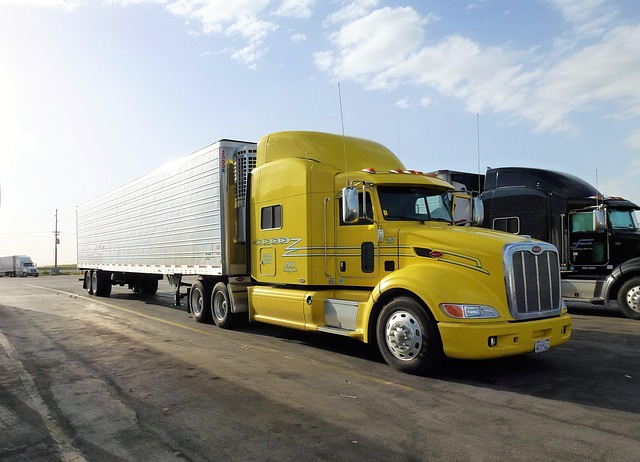Looking to register your car in California? Navigating the process can seem daunting, but it’s a crucial step for all vehicle owners. This guide will walk you through each step of the California car registration process, focusing on key aspects like VIN verification. From understanding the requirements to submitting applications and fees, we’ll ensure you’re prepared. By following these straightforward instructions, you’ll be on your way to securing your vehicle’s registration quickly and efficiently.
- Understanding the California Car Registration Process
- Gather Required Documents for Vin Verification
- Perform Vehicle Identification Number (VIN) Check
- Submit Application and Fees to DMV
- Receive Your Registration Certificate
Understanding the California Car Registration Process

Understanding the California Car Registration Process
Registering a car in California involves several steps designed to ensure vehicle safety and compliance with state regulations. The process begins with verifying the Vehicle Identification Number (VIN) to confirm the vehicle’s authenticity and history. This step, often referred to as VIN verification or VIN inspection, is crucial to establishing that the car meets all necessary standards. In California, you can conduct this vin inspection either through a designated DMV office or, for added convenience, opt for a mobile vin verification service.
After successful VIN verification, you’ll need to gather essential documents, including proof of insurance, proof of ownership, and payment for registration fees. These documents are then submitted to the California Department of Motor Vehicles (DMV) along with your application form. Once all requirements are met, the DMV will process your application, issue a registration certificate, and provide you with a license plate, completing the car registration process in California.
Gather Required Documents for Vin Verification

Before you begin the registration process in California, make sure you have all the necessary documents for VIN (Vehicle Identification Number) verification. This step is crucial as it ensures the accuracy of your vehicle’s information and prevents fraud. Gather the following paperwork:
1. A valid driver’s license or state ID card.
2. Proof of insurance that meets California’s minimum liability requirements.
3. The Certificate of Title, which you can obtain from the previous owner if applicable. If buying from a dealership, they should provide this.
4. A completed and signed Vehicle Registration Application form (DMV Form AR-157).
5. For a mobile VIN verifier or inspection, ensure your smartphone is equipped with the necessary app to scan and transmit the VIN data accurately. This alternative method streamlines the process, allowing you to verify the vehicle’s history remotely.
Perform Vehicle Identification Number (VIN) Check

Before you can register your car in California, it’s crucial to perform a Vehicle Identification Number (VIN) check. This step is essential for ensuring that the vehicle you’re about to register is legitimate and has not been reported stolen or had its identity altered. A simple VIN verification process involves using a mobile vin verifier or conducting a vin inspection yourself by cross-referencing the provided number with reliable online databases.
In California, this check is often done through the Department of Motor Vehicles (DMV) or authorized third-party services that offer mobile vin verification. By performing this crucial step, you’ll be able to navigate the registration process smoothly and ensure your new vehicle’s legal status.
Submit Application and Fees to DMV

After gathering all the necessary documents and ensuring your vehicle meets California’s requirements, it’s time to submit your application and fees to the Department of Motor Vehicles (DMV). This step is crucial for officially registering your car in the Golden State. The process involves filling out Form MV-56, which is the Application for Title and Registration. Here, you’ll provide detailed information about your vehicle, including its make, model, year, and unique Vehicle Identification Number (VIN).
Remember that a key part of this process is completing the VIN verification. This can be done through various methods, even conveniently with a mobile vin inspection or mobile vin verification service. By ensuring your VIN is accurate and matching the data in their systems, you streamline the registration process and help prevent potential delays or issues down the line.
Receive Your Registration Certificate

After submitting your application and relevant documents, it’s time to receive your Registration Certificate. This official document confirms that your vehicle is legally registered in California. The process often involves a vin verification step, where the unique Vehicle Identification Number (VIN) of your car is cross-referenced with state records to ensure its authenticity and history.
A mobile vin inspection or using a mobile vin verifier can streamline this process by allowing the service provider to conduct the VIN check on-site, providing immediate results and ensuring a faster overall registration experience. This modern approach saves time and effort, especially for those who prefer a more convenient car registration process.
Registering a car in California involves several straightforward steps, beginning with understanding the process and gathering essential documents for VIN verification. After successfully completing the VIN check, you can submit your application and fees to the DMV, which will issue your registration certificate upon approval. This efficient procedure ensures that California drivers maintain proper vehicle documentation, facilitating smoother transactions and enhanced road safety.
